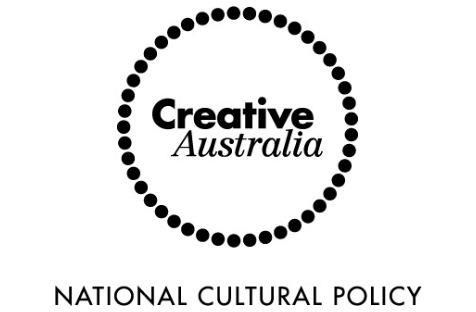In covering the arts industry’s response to Creative Australia over the past two months I have spoken to a good chunk of the members of artsPeak, the umbrella organisation of umbrella organisations for the arts. I’ve heard responses from leaders in the performing arts, visual arts, literary, regional and Indigenous sectors. Clearly everyone has their pet issues but there are key themes.
Theme 1: Recognition
The first thing that just about everybody has said is how glad they are to have a policy. After 20 years in the policy desert, the arts and cultural sector was yearning to hear the value of what we do acknowledged. Government policy isn’t just about what we fund – though of course that’s very important – it is also about creating an agenda for society, acknowledging value and setting expectations.
A policy that acknowledges arts and culture as essential to the life of every Australian was long overdue. The sector has strongly welcomed the acknowledgement of the Indigenous foundations of Australian culture and the articulation of the value of culture in social and economic terms.
Particularly welcome, were the words which compared arts favourably to its cultural competitors: ‘Almost every Australian engages with arts and cultural activities – reading books, going to movies, visiting galleries and museums, listening to music and participating in a wide range of creative pursuits. Indeed there is more direct involvement with the arts than there is with sport or religion, the other two cultural markers.’
Theme 2: Money
Of course nobody would have been too excited by the warm fuzzies if they had not been backed up with money, a total of $235 million in various packages.
Money is never enough but the creative sector was pleased with the quantum in the National Cultural Policy. In particular, the significant investment of $60 million in new funds through the Australia Council and an additional $15 million for unfunded excellence, is widely welcomed.
Not surprisingly, money is also where there was a diversity of opinion. Creative Australia is a broad brush policy that establishes values, sets a framework and leaves the detail as to how the funds should be used up to the responsible authority, the Australia Council for the Arts.
The performing arts sector is pretty happy and rightly so. There is a feeling of relief among the major performing arts companies who, after the Australia Council review, were worried they would lose their triennial funding and be forced to scramble for contestable funds. Six of the majors (Belvoir, Bangarra, Black Swan, Malthouse, WA Ballet and Circus Oz) were identified for a boost of $9.3 million between them and those choices are widely endorsed.
The visual arts sector and the literary sector feel comparatively less happy. While they will share in the new funding through the Australia Council, there is a feeling that their specific needs have not been addressed in the same way. In the visual sector, NAVA (the National Association for the Visual Arts) is disappointed that there was no fund to pay artists for the loan or commissioning of their work for exhibition, something it has been campaigning for. NAVA would also have liked to see better regulation around the digital environment and changes to the tax system, which the policy stopped short of delivering. Similarly the Australian Society of Authors is concerned about the failure of the policy to address the difficult questions of copyright protection in the digital environment and considers that Creative Australia has ‘little or nothing’ for the literary sector.
Creative Australia certainly puts the decision-making power firmly in the court of the Australia Council and while it is generally acknowledged that this is appropriate, individual sectors are concerned that they are not protected – or even specifically acknowledged – under this system. Regional arts, Indigenous arts, the disability and arts/health sectors all expressed these concerns. As a result, everybody is talking about how they can work more closely with the Australia Council to ensure they get a good slice of the cake.
Theme 3: Power and Direction
This question of power and direction at the Australia Council is another theme that emerged strongly from discussion about the Creative Australia Policy – something we have been covering extensively on ArtsHub in recent weeks.
The strongest concerns related to the drafting of the new Australia Council Act, which is a core part of Creative Australia. Everyone agrees we need a new act, the current one is 40 years old. The new Act loosens up the structure of the Act making it easier to have flexible and broader peer review boards which reflect better the diverse and fluid nature of arts practice and that’s been widely welcomed.
But the new Act as originally drafted had a very open brief and across the sector. There were concerns that it failed in several dimensions: protecting freedom of expression, community arts and Indigenous culture, leaving key cultural sectors at risk.
Senior arts figures took these concerns to the Minister and the Senate committee into the Act and late last week the Government took the Bill to a second reading with several amendments including new or restored functions for the council to support Aboriginal and Torres Strait Islander arts practice, support practice that reflects the diversity of Australia, uphold and promote freedom of expression in the arts and promote community participation in the arts.
That issue has been resolved, but I think it points to what are really the core concerns with Creative Australia:implementation and sustainability.
Theme 4: Implementation
The sector overwhelmingly sees Creative Australia as a good policy and a well-funded one but whether this policy can be delivered and how it will play out in the future is very much up in the air and a lot of the concerns are really about bedding down this initiative.
We are already seeing this question of implementation in the education sector. There are some great specialist initiatives in the policy like ArtsReady and the Creative Young Stars programs. There is also the far-sighted and important promise that every child from Foundation to the end of primary school, will study the arts in a ‘rigorous and sequential process’ receiving education in the five art forms: music, dance, drama, visual arts and media arts.Fine words, but in the two months since the release of the policy the debate over school funding and the Gonski reforms has made it clear how very difficult that is going to be to achieve. The quality and quantity of current arts education varies considerably across the States. In Queensland and Tasmania, for example, primary schools have specialist music teachers while in Victoria, which currently has a government inquiry on the issue, an estimated 80 % of state primary students don’t have classroom music at all.
The Federal Government’s proposed formula, which takes money from the tertiary sector to fund primary and secondary education, has in fact highlighted the problem for the arts sector. Few primary teachers have the necessary education to teach any, let alone all five, arts subjects and they will need extended teacher training to achieve a modicum of competence and there’s not much chance of that under the current proposals.
It is far from clear to the arts education sector how this aspect of Creative Australia can be realistically implemented.
Theme 5: Sustainability
The elephant in the room is, of course, the possibility of a change of government in September.
The Opposition has been noticeably silent on Creative Australia. ArtsHub has had a list of questions with Opposition spokesman, Senator Brandis, for weeks and his office no longer returns our calls. Suggestions for bipartisanship on the policy have been studiously ignored.
It is a fantasy – although an appealing one – to think that this or any election might be fought even in part over the national cultural policy, but in an election year there is little mileage in bipartisanship and every reason to control the timing of the message and the release of policy statements.
Given this environment, the very real support the creative sector is giving this policy is tempered by a deep scepticism about whether they have waited 20 years for a policy that will be consigned to the history books within a matter of months.
The sector is looking to the Office for the Arts and the Australia Council to do their best to drive implementation whatever the political environment.






